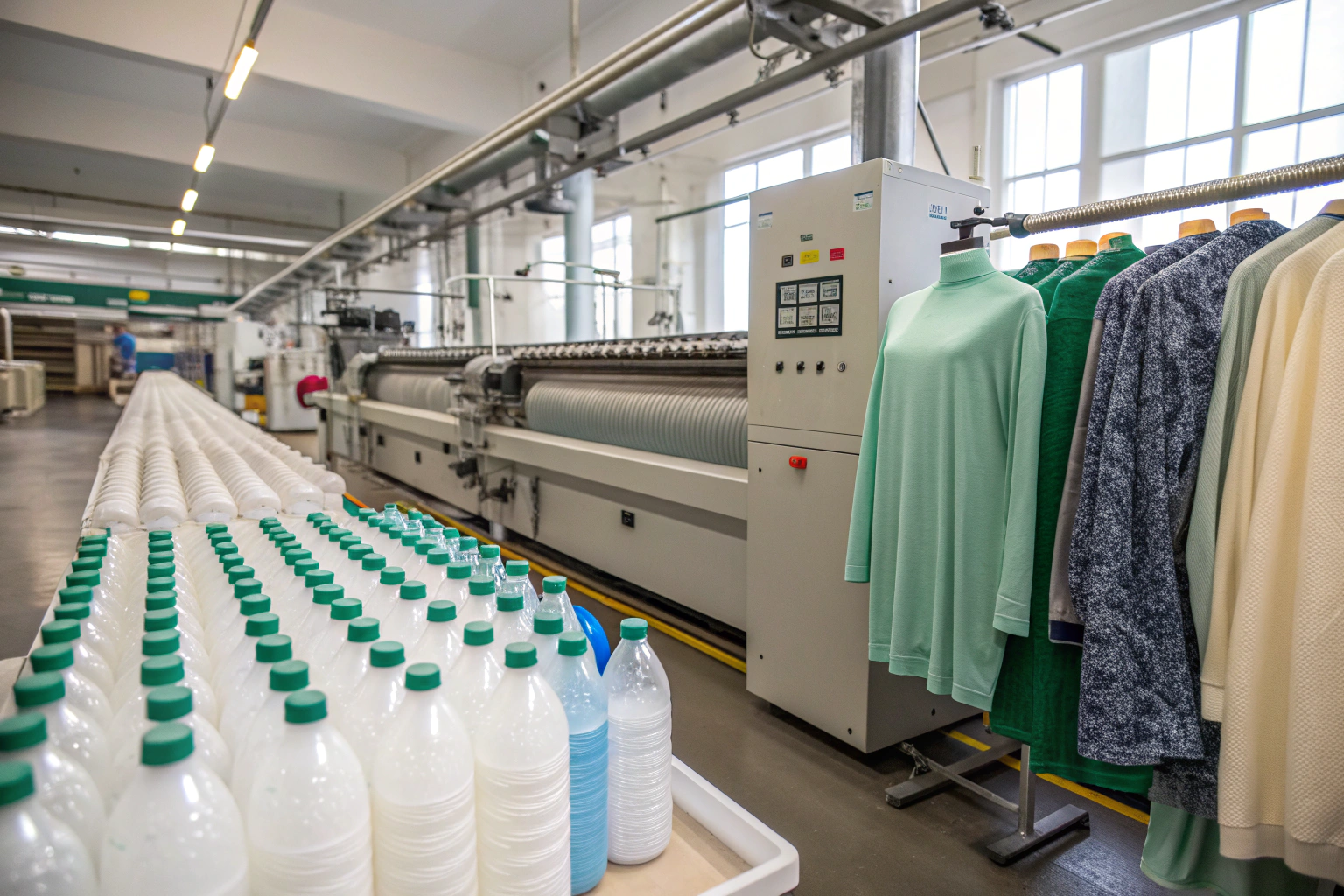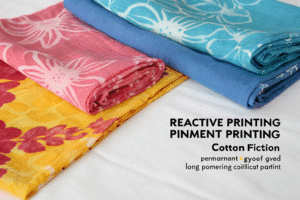Sustainability is reshaping global fashion. As consumers demand eco-conscious products, brands and suppliers are adopting alternatives like recycled polyester (rPET). But the question remains: is rPET actually good for clothing? This article examines what rPET is, how it performs, and why it matters to brands, retailers, and sourcing managers worldwide.
Recycled polyester, or rPET, is created from used PET plastics such as bottles and food containers. It is reprocessed into fibers that mimic virgin polyester in look and feel but carry a reduced environmental footprint.
Let’s dive into the details of how rPET is made, its strengths, its challenges, and its best applications in apparel.
How is rPET Fabric Made?
Recycled polyester is derived from post-consumer waste, primarily plastic bottles, and sometimes pre-consumer textile scraps. The production process involves several steps that transform waste into usable fibers.
- Collection & sorting – Plastics are collected from recycling channels and sorted by type.
- Cleaning & shredding – Bottles are washed and cut into small flakes.
- Melting & extrusion – Flakes are melted down and extruded into continuous fibers.
- Spinning & weaving – These fibers are spun into yarn and woven into textiles.
This closed-loop system significantly reduces plastic waste while conserving resources.
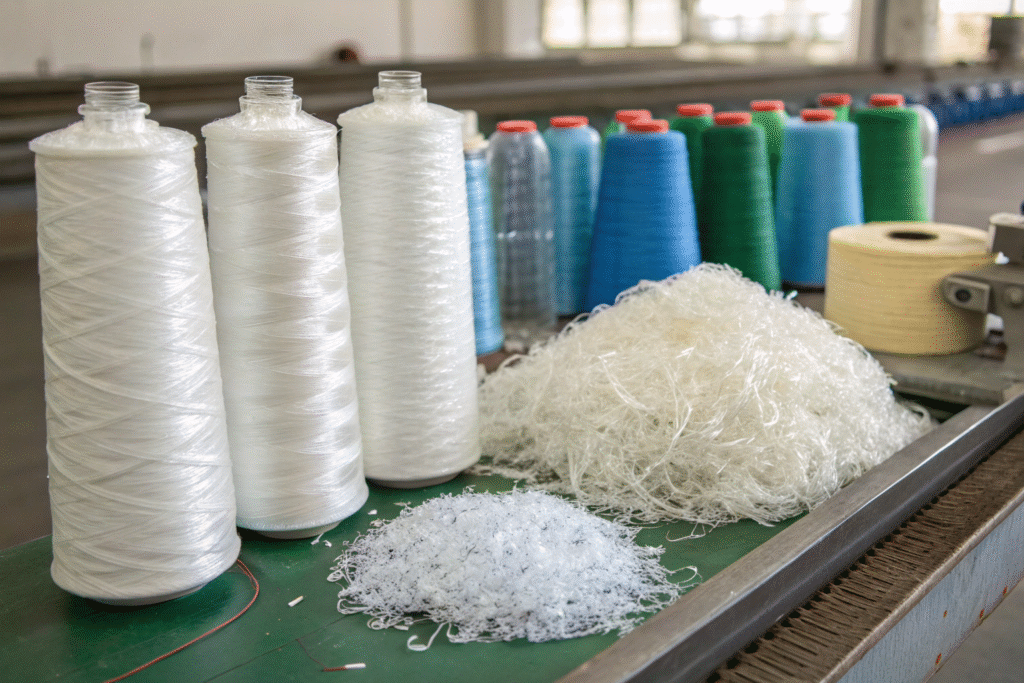
How does rPET compare to virgin polyester in performance?
rPET maintains the same strength, elasticity, and moisture-wicking qualities as virgin polyester. According to Textile Exchange, the production of rPET requires up to 45% less energy.
Can rPET be blended with other fibers?
Yes. rPET is often blended with natural fibers like organic cotton or Tencel to combine durability with softness and breathability.
Benefits of Using rPET in Clothing
The rise of rPET comes from its dual appeal: environmental responsibility and product performance.
- Eco-friendly footprint – Diverts millions of plastic bottles from oceans and landfills.
- Energy savings – Producing rPET uses less fossil fuel and generates fewer greenhouse gases.
- Fashion-ready versatility – rPET can be woven into soft chiffons, sturdy denims, and technical sportswear.
- Brand alignment – Global players like Nike, Adidas, and Patagonia publicly commit to rPET as part of their eco strategies.

Why are major brands adopting rPET so quickly?
It allows them to meet sustainability pledges while retaining high-performance materials. Certifications like GRS and OEKO-TEX Standard 100 provide assurance to consumers and buyers alike.
Is rPET cost-effective for manufacturers?
Yes, especially when scaled. While initial production may cost slightly more than virgin polyester, growing global demand and supportive policies are driving prices down.
Challenges of rPET Fabrics
Despite its advantages, rPET is not free of challenges. Understanding these issues helps businesses manage expectations and plan better.
- Microfiber pollution – Like virgin polyester, rPET sheds microplastics during washing. Filters and washing innovations are being tested to address this.
- Variable quality – Inconsistent recycling processes may yield fibers of lower smoothness compared to virgin polyester.
- Non-biodegradable – rPET is more sustainable but still remains a plastic-based fiber that does not decompose naturally.
- Supply constraints – Global demand sometimes exceeds recycled feedstock availability, impacting prices.
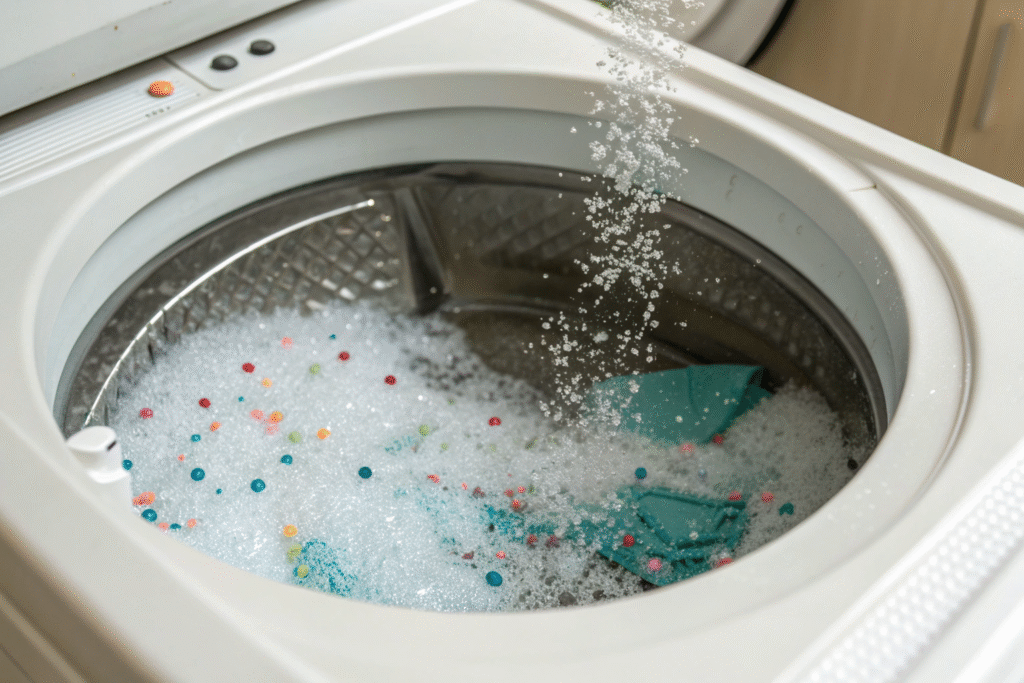
Does rPET reduce microplastic pollution?
Not directly. While it lowers plastic waste overall, it does not eliminate microfiber shedding. Solutions such as Guppyfriend bags or washing machine filters can help.
Can rPET fabrics match luxury quality?
Yes, when advanced spinning and finishing are applied. Many luxury brands now use rPET blends in high-end collections without compromising feel or look. See examples from Stella McCartney who integrates recycled fibers.
Applications of rPET in the Apparel Industry
Recycled polyester is now used across multiple apparel and textile categories.
- Activewear – Its sweat-wicking, lightweight qualities suit gym clothing and sports uniforms.
- Outdoor gear – Jackets, fleeces, and backpacks made from rPET retain weather resistance and strength.
- Fashion apparel – Blended rPET fabrics appear in dresses, tops, and casual wear.
- Home textiles – Cushions, bedsheets, and curtains add eco-consciousness to interiors.
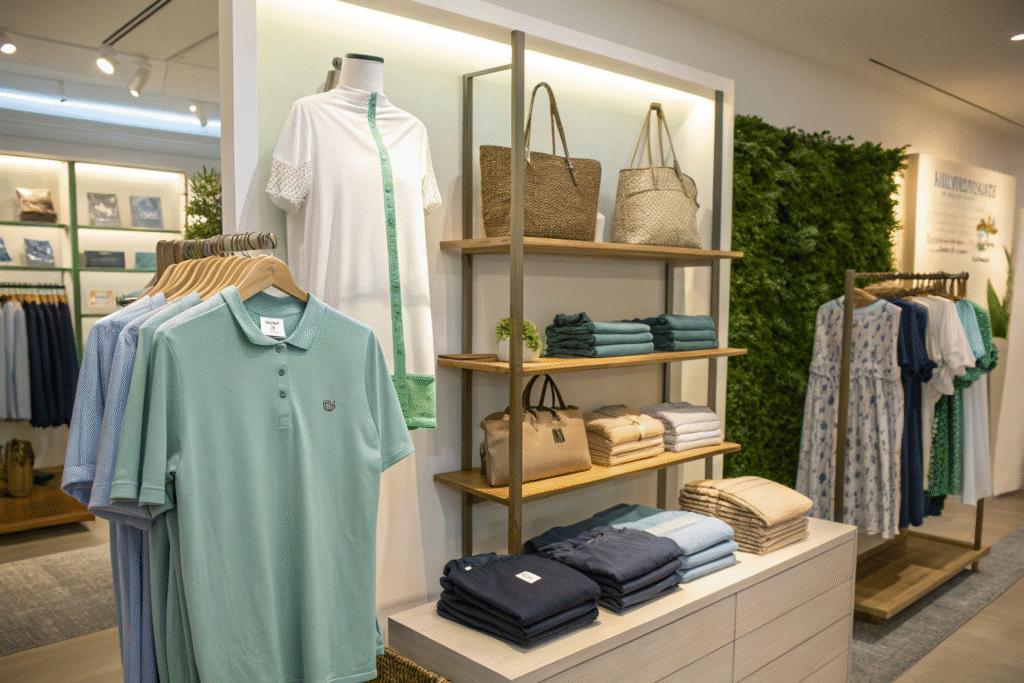
Why is rPET ideal for sportswear?
It delivers durability and moisture control, key for performance. Many Lululemon products incorporate recycled polyester for sustainability without sacrificing quality.
Can rPET be used in accessories?
Yes, rPET fibers are strong enough for handbags, belts, and shoes. Brands like H&M already market rPET accessories to eco-conscious consumers.
Conclusion
Recycled polyester (rPET) is not a flawless solution, but it represents a significant advancement in textile sustainability. It reduces reliance on virgin petroleum, lowers carbon emissions, and gives brands a credible way to align with global eco goals. At the same time, it maintains durability and versatility for a wide range of clothing applications.
At Fumao Fabric, we supply certified rPET woven, knitted, and blended fabrics to global buyers. With our large-scale weaving base, cooperative dyeing and printing factories, and CNAS-accredited quality control, we ensure high-grade rPET textiles for fashion, sportswear, and home collections.
If you are planning your next sustainable collection, contact our Business Director Elaine at elaine@fumaoclothing.com to start your order with confidence.

